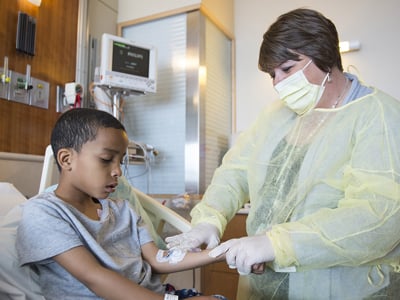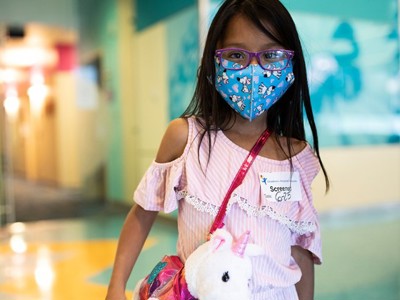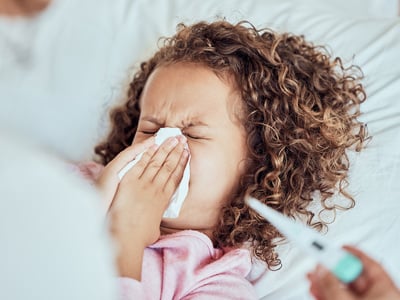- Doctors & Departments
-
Conditions & Advice
- Overview
- Conditions and Symptoms
- Symptom Checker
- Parent Resources
- The Connection Journey
- Calm A Crying Baby
- Sports Articles
- Dosage Tables
- Baby Guide
-
Your Visit
- Overview
- Prepare for Your Visit
- Your Overnight Stay
- Send a Cheer Card
- Family and Patient Resources
- Patient Cost Estimate
- Insurance and Financial Resources
- Online Bill Pay
- Medical Records
- Policies and Procedures
- We Ask Because We Care
Click to find the locations nearest youFind locations by region
See all locations -
Community
- Overview
- Addressing the Youth Mental Health Crisis
- Calendar of Events
- Child Health Advocacy
- Community Health
- Community Partners
- Corporate Relations
- Global Health
- Patient Advocacy
- Patient Stories
- Pediatric Affiliations
- Support Children’s Colorado
- Specialty Outreach Clinics
Your Support Matters
Upcoming Events
Colorado Hospitals Substance Exposed Newborn Quality Improvement Collaborative CHoSEN Conference (Hybrid)
Monday, April 29, 2024The CHoSEN Collaborative is an effort to increase consistency in...
-
Research & Innovation
- Overview
- Pediatric Clinical Trials
- Q: Pediatric Health Advances
- Discoveries and Milestones
- Training and Internships
- Academic Affiliation
- Investigator Resources
- Funding Opportunities
- Center For Innovation
- Support Our Research
- Research Areas
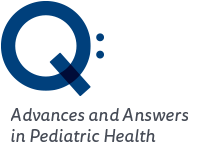
It starts with a Q:
For the latest cutting-edge research, innovative collaborations and remarkable discoveries in child health, read stories from across all our areas of study in Q: Advances and Answers in Pediatric Health.


Infectious Disease
Coronavirus Disease 2019 (COVID-19) in Kids
Kids aren’t just mini adults. In fact, they’re incredibly different. That’s why they need incredibly different care.
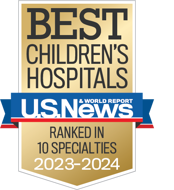
Get Care Now
From emergency to urgent care to 24/7 pediatric advice, we’re here to help in the heat of moment.
What is COVID-19?
Coronavirus disease 2019, abbreviated as COVID-19, is the infectious illness caused by the new coronavirus that was first discovered in late 2019. Due to the wide spread of the virus, COVID-19 is now a pandemic affecting many countries across the world, including the United States. Studies show that COVID-19 is more serious for adults over age 65 and people with certain underlying medical conditions than for the average child. However, even healthy children can become sick, some seriously, and can spread COVID-19.
Click to expand the accordions below to learn more about COVID-19 in children and teens.
COVID-19 is caused by a coronavirus that first appeared in December 2019. The official name of this novel (new) coronavirus is severe acute respiratory syndrome coronavirus 2, abbreviated as SARS-CoV-2. The virus SARS-CoV-2 causes COVID-19.
Where did SARS-CoV-2 come from?
SARS-CoV-2 is a new virus that has not been previously identified in the human population. It was first discovered in the Wuhan province of China in late 2019. Early studies suggest that it originated from an animal source, most likely bats.
In humans, several coronaviruses are known to cause respiratory infections (lung infections) that range from the common cold to much more serious diseases like severe acute respiratory syndrome (SARS) and Middle East respiratory syndrome (MERS).
Though you may hear these terms used interchangeably in the news, the virus and the disease caused by the virus have different names. More specifically:
- Coronaviruses are a family of viruses that can cause illness in animals or humans.
- Though “the coronavirus” commonly refers to SARS-CoV-2, technically, there are many different coronaviruses.
- SARS-CoV-2 is the name of the specific coronavirus that causes the viral respiratory illness COVID-19 and the resulting pandemic.
Learn more about the names and differences for terms that describe coronavirus disease from the World Health Organization.
COVID-19 is a new disease, and doctors and scientists are still learning about it. Though most children with COVID-19 tend to have milder forms of the disease, kids are not immune to COVID-19 and can still get sick, some seriously.
COVID-19 in kids and teens
Yes. Children of all ages can get sick with COVID-19. Though fewer children overall have been sick with COVID-19 compared to adults, kids can be infected, get sick and spread the coronavirus to other people.
Yes. Just like adults, children without symptoms of COVID-19 can still spread the virus to others. This is called asymptomatic spread.
Since the start of the pandemic, doctors have been learning more about the disease and how it affects kids. Here are several things we have learned about COVID-19 in children:
- The number of childhood cases of COVID-19 tends to mirror the cases in the surrounding community; as cases rise in adults, they also rise in children.
- In fact, when we look at the percentage of children with COVID-19 as a proportion of total cases, the cumulative (total) percentage of children has also gone up. This means that, proportionally speaking, more children are getting sick with COVID-19 than at the beginning of the pandemic. Data through July 7, 2022 from the American Academy of Pediatrics shows that children have made up 19% of the total number of cases in the U.S.
- Because many cases of COVID-19 in people younger than 18 are mild or even asymptomatic, it’s highly likely that we are missing some cases of COVID-19 among children.
- When comparing the burden of disease of COVID-19 and influenza in children, COVID-19 has caused more cases, hospitalizations and deaths in kids than a typical year of influenza.
In short, while it is fortunate that COVID-19 has not proven to be as serious in children compared to adults, it is inaccurate to say that COVID-19 does not affect children or that it isn’t as serious as the flu. And, in addition to the sheer number of children who do get sick with COVID-19, consequences from the pandemic are also affecting many more children mentally, emotionally and socially.
Babies younger than 1 year old might be more likely to have severe illness from COVID-19.
What about premature babies?
We do not have much scientific data on the impact of COVID-19 in children who were born prematurely. However, we know that other respiratory illnesses, such as the flu and respiratory syncytial virus (RSV), are more serious for premature babies. This is because babies who were born early tend to have poorly developed or underdeveloped lungs that make it harder to fight infection. Additionally, preterm babies have smaller airways and more secretions, which can make breathing more difficult.
A study at Children’s Colorado showed prematurity was a risk factor for being hospitalized for COVID-19. We cannot draw conclusions from a single study, but we expect to learn more as additional studies are published.
For kids who were born prematurely but do not have other medical conditions (called comorbidities) and are no longer in critical care, this risk likely decreases after the age of 2. Parents of babies who were premature should follow the same precautions. Make sure your child has received all other vaccines they are eligible for, as we have good vaccines for the other conditions preemies are at risk for, including the flu.
Read more about vaccines for babies born with medical conditions.
Children with certain underlying medical conditions like obesity, asthma, chronic lung disease, diabetes, weakened immune systems and heart disease since birth might also be at increased risk compared to other children. (More on this below.)
More evidence is emerging that children with obesity who become infected with SARS-CoV-2 are at an increased risk of becoming severely ill if they get COVID-19. Recent studies, including one at Children’s Colorado, have shown that obesity is a top risk factor for severe COVID-19 in children.
Remember, scientific evidence about COVID-19 in people younger than 21 is limited. We will learn more as additional data becomes available.
Current evidence from scientific studies shows that some people with underlying medical conditions are or could be at greater risk of severe illness from COVID-19.
Increased risk
When compared to other children, kids with the following conditions might be at an increased risk for severe illness from COVID-19:
- Multiple chronic conditions that affect several parts of the body (medical complexity)
- Neurologic, genetic or metabolic conditions
- Congenital heart disease
People of all ages – including kids – with the following underlying medical conditions are at increased risk of severe illness from COVID-19:
- Cancer
- Chronic kidney disease
- Immunocompromised state (weakened immune system) from solid organ transplant
- Obesity
- Serious heart conditions, such as heart failure, coronary artery disease or cardiomyopathies
- Sickle cell disease
- Type 2 diabetes
Possible increased risk
People of all ages with the following conditions might be at an increased risk for severe illness from COVID-19:
- Asthma (moderate-to-severe)
- Cerebrovascular disease
- Chronic lung disease
- Cystic fibrosis
- High blood pressure
- Weakened immune system from blood or bone marrow transplant, immune deficiencies, HIV or use of immune-weakening medicines
- Neurologic conditions
- Liver disease
- Pregnancy
- Pulmonary fibrosis
- Smoking
- Thalassemia (a type of blood disorder)
- Type 1 diabetes
- Vaping
Scientists are learning more about how SARS-CoV-2 spreads between people. It spreads most commonly during close contact. The latest evidence shows that:
- COVID-19 can spread through respiratory droplets, such as saliva and mucus, when people cough, sneeze, breathe, talk, sing and shout. These droplets can land on others or on surfaces. The virus can infect others if it comes into contact with their eyes, nose or mouth.
- Less commonly, COVID-19 can also be spread through airborne transmission, which occurs when tiny respiratory droplets are able to linger in the air for minutes to hours due to poor ventilation. Current science shows that airborne transmission is less common than close contact, but it’s an important consideration for small or indoor public spaces with less air flow.
Learn more about how COVID-19 spreads from the CDC.
Remember, kids can spread the virus, even if they do not have symptoms. It’s important for everyone – including children and teens – to follow public health guidelines like getting vaccinated, cleaning hands frequently, wearing cloth face coverings (with some exceptions like babies and toddlers), and physical distancing, especially during times of high transmission in your local area.
Each of these methods offers some but not complete protection. This is why it’s important for families to use these methods together to protect themselves and others from COVID-19.
There are several steps parents and families can take to help prevent children (and everyone) from getting COVID-19. Use all of the following methods to protect your family and decrease the spread of COVID-19:
- First and foremost, get vaccinated and keep up with recommended booster doses. Vaccines are the strongest layer of protection we have against COVID-19, particularly severe illness and death from COVID-19.
- Know when to wear a well-fitted mask or face covering to help protect yourself and others.
- Wash your hands frequently and thoroughly, especially after interacting with others.
- Keep space between yourself and people you don’t live with (referred to as social distancing or physical distancing).
- Stay at home when you feel sick (and keep your kids home when they feel sick, too).
- If you or your child has symptoms, get tested.
- Avoid large gatherings and poorly ventilated indoor areas; when possible, socialize outside, not inside.
Remember, there’s no way to eliminate all risk, but there are simple and effective steps we can all take to protect each other and limit the spread of COVID-19 within our neighborhoods and communities. Practicing these public health measures isn’t just about protecting yourself and your family – it’s about protecting the most vulnerable people in our community.
Signs and symptoms
The most common symptoms of COVID-19 in children are:
Some patients with COVID-19 also experience the following symptoms:
- New loss of smell and/or taste
- Aches and pains
- Headache
- Sore throat
- Congestion or runny nose
- Nausea or vomiting
- Diarrhea
- Rash on the skin and/or discoloration of the fingers or toes
- Shortness of breath (feeling like you can’t take a full breath)
Most children with COVID-19 have mild symptoms and some have no symptoms at all. Some children can get severely sick from COVID-19. If your child has an underlying medical condition that may put them at higher risk, call their doctor as soon as you notice symptoms.
The symptoms of COVID-19 are similar in kids and adults. However, young children may have trouble explaining their symptoms. For example, it may be hard for a child to explain that they cannot taste or smell. Instead, they may say that their food doesn’t taste good or that it tastes funny.
People develop symptoms 2 to 14 days after they are exposed to COVID-19. The average time it takes to develop symptoms is 3 days. This is called the coronavirus incubation period, or the time from when a person is exposed to when they have symptoms.
Most children who have COVID-19 will not become seriously ill. However, whether or not you think it could be COVID-19, you should call 911 or go to the emergency room if you notice any of the following serious symptoms:
- Trouble breathing
- Persistent (ongoing) pain or pressure in the chest
- New confusion
- Inability to wake up or stay awake
- Bluish lips or face
Important: Do not delay getting emergency care for your child because you are worried about possible spread of COVID-19. Emergency departments, including at Children’s Colorado, have infection prevention plans to protect you and your child from getting sick with COVID-19 if your child needs emergency care.
Tests and diagnosis
There are several types of COVID-19 tests now available. A viral test called polymerase chain reaction (PCR) is considered the best method or “gold standard” for detecting an acute (active) COVID-19 infection. If your child receives a positive PCR test, it means your child has an active COVID-19 infection and can spread the virus to others.
What parents and caregivers should know about COVID-19 testing
Though there are several types of COVID-19 tests now available, such as rapid tests or saliva tests, each varies in terms of accuracy and its ability to detect negative and positive results. Some tests are faster, but they are also more likely to miss detecting the virus. This can create a false negative, meaning the person has the virus but received an incorrect result.
There are several reasons a child might need to be tested, including:
- They have symptoms of COVID-19.
- They have been exposed to someone infected with the virus. (Get tested 5 days after the known or suspected exposure.)
- Their school or childcare center requires it.
- They need to be tested before being admitted to the hospital or before a medical procedure that requires anesthesia.
- They need to be tested before or after traveling.
- When required by a healthcare provider or public health official.
If you’re unsure, start by calling your child’s pediatrician, who can help you decide if testing is appropriate.
The CDC has details on what you need to know about COVID-19 testing, including the different types of COVID-19 tests, when to get which kind of test and what to do based on your child’s test result. If you have questions about the accuracy of a specific test, you should ask your doctor.
For the most accurate results, look for COVID-19 testing that meets the following criteria:
- Molecular PCR testing
- Done in a hospital or public health department laboratory
- Tested on a sample collected via nasopharyngeal swab (where the nasal passages and throat meet)
If your child’s doctor suspects they may have COVID-19, they will order a viral test. This is often a laboratory-based PCR test, which is most accurate, though rapid tests may also be available.
Treatment
Coronavirus treatment depends on the severity of the illness. Most children who have COVID-19 tend to have mild symptoms that can be managed at home. If your child tests positive for COVID-19 you should inform their doctor.
Treating kids with mild symptoms of COVID-19
If you or your child tests positive for COVID-19, treatment is focused on relieving symptoms. This includes:
- Getting lots of rest
- Taking acetaminophen (Tylenol) or ibuprofen (Advil or Motrin) for any fever or achiness
- For children over 4, managing any cough or runny nose with cold medication
- Staying hydrated by drinking lots of clear fluids, like water
Call your child’s doctor if they experience any shortness of breath, seem to be getting worse or are not getting better within a few days.
Treating children who are at higher risk due to underlying medical conditions
Fortunately, we have new outpatient treatment options to help prevent more severe cases of COVID-19, particularly for patients who are at greater risk of getting severely sick with COVID. These include:
- Paxlovid, a newer antiviral pill
- Remdesivir, an antiviral available to patients of certain ages and weights
If your child has an underlying medical condition and they develop symptoms of COVID-19 or test positive, contact their pediatrician. The earlier you seek treatment after first noticing symptoms, the better.
Treating kids with more severe cases of COVID-19
Some children will develop more concerning cases of COVID-19, though this is relatively rare. Current science shows that approximately 1% to 2% of children who have COVID-19 will require hospitalization. Of those cases, about 1% of hospitalized kids will need critical care in an intensive care unit (ICU).
Treatment is available for kids and teens who have more serious cases of COVID-19. Treatment options include:
- Dexamethasone (a drug called a corticosteroid that can help decrease inflammation or swelling in the body)
- Remdesivir (an antiviral)
Though pediatric studies on these treatments are not yet available, dexamethasone and remdesivir have helped adults with COVID-19.
A small number of children who had COVID-19 have gone on to develop a new inflammatory syndrome. This is called multisystem inflammatory syndrome in children associated with COVID-19, or MIS-C. Though MIS-C is rare, it is serious.
Yes. Doctors in our Infectious Disease Program are experts in treating infectious conditions in children, including COVID-19.
Non-urgent care
If you believe your child needs attention for possible COVID-19, first call their pediatrician. If you do not have a pediatrician, you can call our ParentSmart Healthline at 720-777-0123 for guidance from a pediatric nurse. This service is available 24/7.
Urgent or emergency care
Children’s Colorado also offers pediatric urgent and emergency care at several locations. Learn more about our urgent and emergency care and how to decide when to go where. If you believe your child is experiencing a life-threatening emergency, always call 911.
If you do go to urgent care or an emergency room for possible COVID-19, remember to call ahead or tell the team about your symptoms or known test results as soon as you arrive. This will help keep all patients and health workers safe.
COVID-19 vaccines
There is a large international effort underway to develop vaccines against COVID-19. In the U.S. the Food and Drug Administration (FDA) has authorized or approved three vaccines against COVID-19. You can find more info about all available COVID-19 vaccines through the Centers for Disease Control and Prevention (CDC).
Read common questions and answers about the COVID-19 vaccines.
There are good reasons for studying kids separately from adults and for studying kids after adults.
As a group, healthy kids are at lower risk of experiencing severe COVID-19. That’s the main reason younger kids were not included in the first round of vaccine studies.
Additionally, kids’ bodies are different than adults' – including their immune systems – and they may react differently to a vaccine than adults do. The medical community had to make sure the vaccines were both safe and effective in the pediatric population before they were available for all children. That process takes place in clinical trials.
Behind the scenes for any new vaccine, there is an extensive study and approval process. And, once a vaccine is authorized and available, there’s another extensive surveillance system monitoring vaccine safety within the population.
Yes. There are strict requirements and rigorous safety standards that must be met before any vaccine, including COVID-19 vaccines, can be approved by the Food and Drug Administration (FDA) and distributed to the public. The COVID-19 vaccines have gone through the rigorous process to prove both safety and effectiveness. They have been authorized for emergency use by the FDA and recommended by the CDC.
For over 30 years, medical experts and researchers have been studying mRNA vaccines as a way to stop other types of infections and cancers. Scientists also used their knowledge and experience about similar coronaviruses that cause diseases like Middle East respiratory syndrome (MERS) and sudden acute respiratory syndrome (SARS) to help jump start their research on creating vaccines against COVID-19. This means that they were ready when COVID-19 became a pandemic in 2020.
Additionally, thousands of medical experts from around the world were all working on the same problem at the same time, increasing the chance of successfully coming up with safe and effective vaccines. A lot of money was invested to solve this problem quickly to help keep people and communities safe.
Remember, vaccines have historically been remarkably safe and effective, and they’re the single best way to prevent infectious diseases. We need vaccines to stay safe. This is true for COVID-19, and dozens of other vaccine-preventable diseases from polio to measles to the flu.
In the U.S., more than 590 million doses of the COVID-19 vaccines have been administered for well over a year. Of those, more than 11 million doses have been given here in Colorado. We have lots of information and experience proving the safety of the currently authorized vaccines, including for kids. Please be sure to speak with your healthcare provider if you have any questions or concerns about your personal risk.
Pediatrician Lisa DeCamp, MD, answers this question in the video below.
All three COVID-19 vaccines available in the U.S. are extraordinarily effective, especially for preventing hospitalizations and severe cases of COVID-19.
All three vaccines available in the U.S. are very effective at preventing the most severe cases of COVID-19. This is great news, and it means we now have several safe and effective vaccines to help us end the pandemic while reducing individuals’ risk of severe illness.
As many public health experts and doctors say, the best COVID-19 vaccine is the one you are offered. What they mean is that getting the vaccine as soon as you are eligible – not the type you get – is what matters most. However, now that vaccines are more readily available, there are a few details to consider as you deliberate about which vaccine may be right for you.
What to consider when deciding which COVID-19 vaccine to get for yourself or your child
Age
- All individuals 6 months and older are now eligible to receive either mRNA vaccine: Pfizer or Moderna.
Number of doses
- Now that Pfizer and Moderna's COVID-19 vaccines are available to everyone older than 6 months, some parents may want to consider the number of doses in the initial series.
- Moderna's COVID vaccine series is 2 doses for everyone ages 6 months through 17 years.
- The number of doses for the Pfizer vaccine depends on age group. For newly eligible children ages 6 months through 4 years old, the initial series is 3 doses. For children ages 5 and older, it's 2 doses.
- Some parents prefer Moderna for their young children because it is more convenient to book 2 appointments instead of 3. Either way, medical experts say to choose whichever vaccine is easiest to get for your child.
- Learn more about the differences between the COVID vaccines for ages 5 and under.
Vaccine availability near you
- The vaccines have different storage and transportation requirements, which means some facilities may carry one or multiple vaccines, depending on their capabilities. Some rural areas or mobile vaccination clinics may be more likely to carry the Johnson & Johnson vaccine, since it can be stored at higher temperatures.
The vaccines work. The COVID-19 vaccines available in the U.S. continue to be remarkably effective in reducing risk of severe disease, hospitalization and death, including against new variants delta and omicron.
If you want to look into each vaccine and determine which you prefer to receive or to seek for your child, we encourage it. But if you have limited time or access to the vaccines and you understand the considerations for each, you don’t have to worry about which brand you receive.
If you have questions about your health, your level of risk or additional considerations for the type of vaccine you should get, please speak with your doctor.
It's perfectly normal to have questions about the COVID-19 vaccines. We're providing regularly updated Q&A, videos and articles so you can learn all about the COVID-19 vaccines. You can also read our complete list of COVID vaccine FAQs, organized by topic.
Additional resources
COVID-19 is a new condition, and we’re learning more about it as additional scientific evidence becomes available every day. This means that health guidance may change as we learn more about how the coronavirus spreads and how to treat it.
We will update this webpage regularly as we learn more about COVID-19 and its impact on children and teens. We also recommend the following trusted resources for additional information on the COVID-19 pandemic.
- Centers for Disease Control and Prevention (CDC): Information and resources from the public health authority in the U.S.
- Colorado Department of Public Health and Environment (CDPHE): COVID-19 resources from Colorado’s health department
- HealthyChildren.org: Resources for parents from the from the American Academy of Pediatrics (AAP)
- U.S. Food and Drug Administration (FDA): Information from the federal agency that regulates medications, vaccines, medical devices and other health-related products in the U.S.
- World Health Organization (WHO): Information for the public from the global health authority
FAQs about COVID-19 in kids
Most children who are infected by COVID-19 are asymptomatic, meaning they don’t have any symptoms, or they have mild symptoms. In rare cases, though, there are two reasons some children get very sick.
“One is just a really bad COVID-19 infection that occurs during what we call an acute — or sudden — infection,” says Dr. Dominguez. “The other is a new condition called multisystem inflammatory syndrome in children, or MIS-C, which usually occurs 2 to 6 weeks after the infection.”
Cases of COVID-19 continue to ebb and flow. But when COVID-19 case counts increase, experts expect an increase in MIS-C, Dr. Dominguez says. Although MIS-C is rare, parents should be aware of the symptoms. The best way to prevent MIS-C is to take recommended precautions against COVID-19.
Fortunately, most kids and teens who have COVID-19 fully recover from it within 14 days of their first symptoms.
A small number of children have developed an inflammatory condition called multisystem inflammatory syndrome in children, or MIS-C for short. Though this is serious, it is rare.
There have been reports of cases where COVID-19 symptoms last for several weeks or months following infection. This has been called long-COVID, post-COVID syndrome or post-acute COVID syndrome (PACS). The official term in the medical community is now PASC, short for post-acute sequelae of SARS-CoV-2.
Doctors and scientists are still learning about this phenomenon. Most cases have been in adults, though cases in children have been reported.
Read what the CDC says about long-term effects of COVID-19.
Though influenza (flu) and COVID-19 are both contagious respiratory illnesses, they are caused by different viruses. COVID-19 is caused by infection with a new coronavirus (SARS-CoV-2) and the flu is caused by infection with influenza viruses. There are several seasonal influenza viruses, and they circulate each year during what we call flu season.
Because some of the symptoms of the flu and COVID-19 are similar, it may be hard to tell the difference between them based on symptoms alone, and testing may be needed to help confirm a diagnosis. If you think your child has the flu or COVID-19, the best thing to do is call your child’s doctor to ask whether your child should be tested.
Learn about differences between COVID-19, the flu and other respiratory conditions.
If your child had a suspected or confirmed case of COVID-19, you should keep an eye on them for several weeks to make sure they are feeling better and that their symptoms improve and go away over time. Be sure to watch for any symptoms of MIS-C. Though MIS-C is rare, you should be aware of it and keep in touch with your child’s doctor if you have concerns.
In general, your child should remain in isolation until 10 days after their positive COVID-19 test.
Advice for parents of young athletes
If your child participates in competitive sports or vigorous exercise, we recommend checking in with their doctor before they return to sports and play. Their pediatrician can give them an exam to ensure that your child does not have lingering symptoms and is ready for exercise.
Generally, if your child has had confirmed or suspected COVID-19 they should wait at least 14 days after their symptoms appeared before returning to sports or vigorous exercise. This is because your child could still be contagious and may spread the coronavirus to teammates or others. It may also take up to two weeks for some symptoms to appear.
Next steps
-
Would you like to learn even more?
See our family-friendly coronavirus resources -
Do you need to talk to a nurse?
Find out how to call our hotline -
Have questions about the vaccines and kids?
Learn all about the COVID-19 vaccines
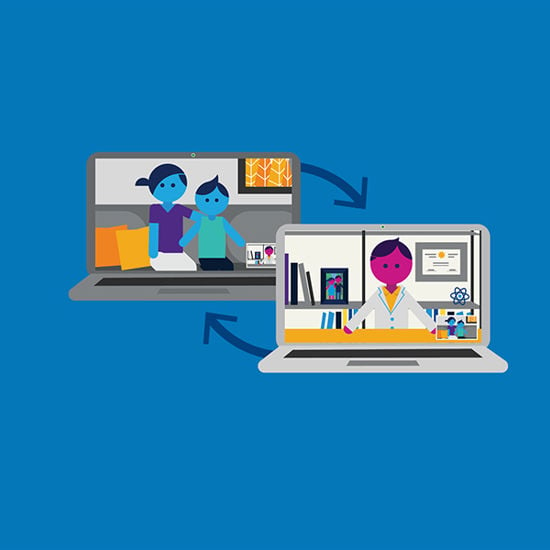
Compassionate care, wherever you are
We’re here when you need us. Telehealth appointments are available across every specialty, so you can get the high-quality care we’ve always offered from the comfort, privacy and convenience of home.
See if telehealth is right for you



 720-777-0123
720-777-0123





